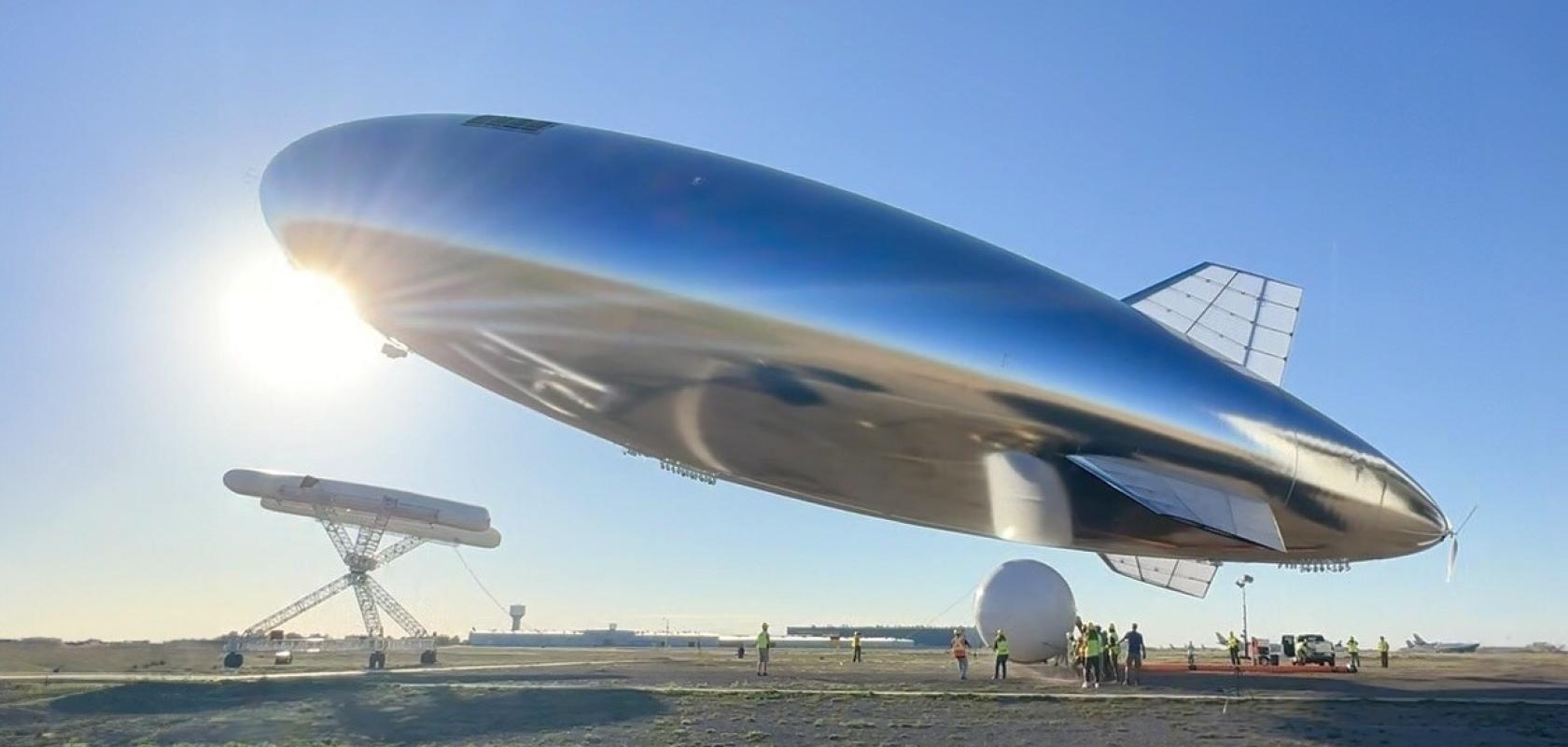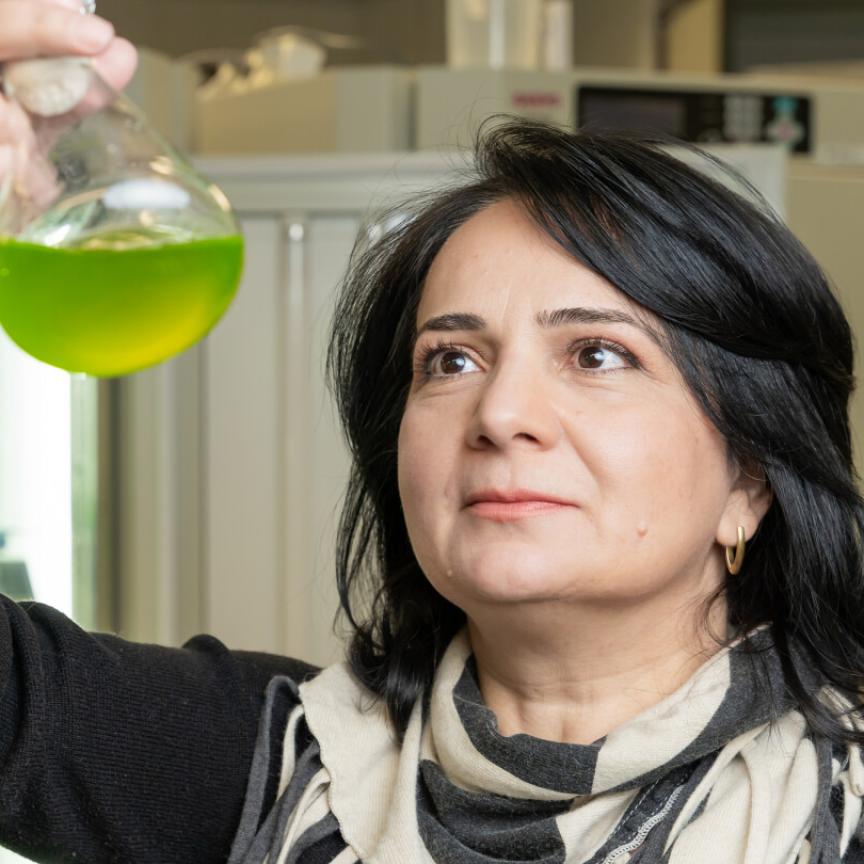Long-duration scientific flights could one day be completely powered by solar energy, advancing remote sensing applications. But what demands are there on the imaging and sensing equipment on board? Electro Optics speaks to two scientists from Norsk Elektro Optikk, the developer of hyperspectral imagers that were part of a recent solar-powered test flight
A successful solar-powered test flight has been completed in the stratosphere with two hyperspectral imagers on board.
On 15 August, aerospace company Sceye launched its high-altitude platform system (HAPS) from its New Mexico facility at 7:36am local time and landed on 16th August at 12:21pm.
The endeavour demonstrates the capability of using solar power during daylight hours while employing battery capacity for overnight flights, with sensing instruments potentially able to sustain operations over months or even years.
The HAPS carried two HySpex hyperspectral imagers (HSIs) from Hyspex, a subsidiary of Norsk Elektro Optikk (NEO) – a Mjolnir V-1240, owned by the US Geological Survey, and a SWIR-640 customised for methane detection, featuring 5- and 3.4-metre ground sampling distances from 70,000 feet (21,300m). Both were tailored for high-altitude operations.
The two HSIs operated side-by-side, enabling hyperspectral data collection across the 400-1,000nm and 1,350-2,500nm wavelength ranges.
Sceye has now conducted a total of 20 test flights, with two additional flights scheduled for 2024, further refining the platform in anticipation of commercialisation.
The Hyspex team now returns to Norway with vast amounts of data, which will be processed into geology maps, hydrocarbon detection maps, and methane detection maps. “With this flight, we hope to demonstrate our detection limit for methane gas from the stratosphere,” said Karina Strøm, Research Scientist at NEO, who also participated in the Roswell flight.
Interview: Solar-powered hyperspectral imaging at 70,000 feet

Martin Løvøy and Karina Strøm, Research Scientists at NEO
What were the challenges associated with operating in the stratosphere with battery power?
The imagers were battery-powered, consistent with the solar-powered HAPS mission. The onboard battery packs of the HAPS charge during the day and store enough electricity to power both the payload and the ship’s control systems.
A significant challenge was temperature control. At stratospheric altitudes, temperatures can drop to -55°C. While insulation and heating kept the payload compartment warm, the challenge was dissipating heat from critical components. In the stratosphere, there’s little air to create sufficient airflow for cooling, so extensive work was done to passively manage heat.
Additionally, the decreasing refractive index of air at higher altitudes required adjustments to ensure optimal focus and sharpness for the hyperspectral cameras. One camera was adjusted to maintain perfect sharpness at the operational pressure of 40mbar. Customisations were also made to achieve specific ground sampling distances (GSD) for the two HSI systems, tailored for high-altitude operations.
Weight and size restrictions are increasingly strict at higher altitudes, presenting further challenges in designing airborne applications.
What kind of optical innovations have made this hyperspectral imaging application possible?
Hyperspectral imaging systems capture a 2D spatial scene with more than 32 spectral channels for each spatial pixel, offering significant advantages over RGB cameras due to the spectral content in each pixel. Pushbroom architecture, ideal for airborne operations, provides the best spectral fidelity per pixel with minimal spatial misregistration. This architecture captures a narrow line of the scene in one frame, with all spectral content simultaneously, allowing for high signal-to-noise ratios, especially beneficial for applications like methane leak detection.
What further development work is needed to enable hyperspectral imaging on long-duration solar-powered flights?
As large amounts of data are collected over long periods, storage becomes a challenge. Developing a high-speed link to stream data to the ground would be beneficial. Additionally, selectively streaming or processing specific bands of interest onboard the HAPS is a potential solution under development, which could be applicable for both future high-altitude and ground-based missions.
How will the innovation happening in this mission trickle down to other hyperspectral imaging sectors?
The HAPS platform, operating in the stratosphere, offers insights relevant to future space missions. Also, the hardware and software infrastructure we are developing for an EU project [m4mining] on real-time processing in the mining sector could be directly applicable to future stratospheric missions.
What advances in optical components are helping to push hyperspectral imaging technology further?
We are continuously improving optical components, such as custom gratings tailored for specific applications like methane or hydrocarbon detection. Ongoing development and production within the EU and the US are crucial to advancing these technologies.


